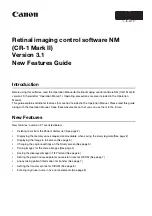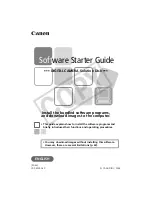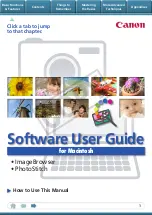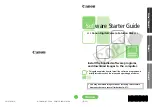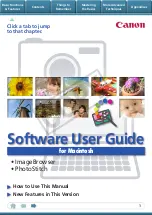
configure mpls rsvp-te add profile
ExtremeWare Software 7.3.0 Command Reference Guide
1791
represent higher priorities. The
setup-priority
range is 0 to 7 and the default value is 7. The
hold-priority
range is also 0 to 7 and is set equal to the
setup-priority
by default. ExtremeWare
does not support LSP preemption.
The
retry-timeout
keyword specifies the maximum number of seconds the switch allows for LSP
setup. If the LSP cannot be established within
retry-timeout
seconds, the LSP is resignaled. The
default value for
retry-timeout
is 30 seconds with a configurable range of 5 to 600 seconds. The
hop-count
parameter limits the number of LSRs the path can traverse, including the ingress and egress
router. The default
hop-count
value is 255 with a configurable range of two to 255.
After an LSP has established, the egress LSR may be optionally pinged to determine end-to-end path
connectivity. If a ping response is not received within [2 *
ping-interval
– 1] seconds, the LSP is
considered unavailable. The
ping-interval
keyword specifies how frequently an ICMP echo request is
transmitted to the egress LSR IP address on the established LSP. The default
ping-interval
is zero,
which indicates no end-to-end LSP health checking is performed. You can set the
ping-interval
value
to any interval between 0 and 60 seconds.
The route
metric
is used to determine if an established RSVP-TE LSP will actually be used to send
data. Whenever the configured metric is less than, or equal, to the calculated IGP metric, the LSP is
used for sending routed IP traffic. In this case, the LSP is also used to send TLS data when the TLS
tunnel is configured by specifying the tunnel LSP endpoint IP address. Traffic is distributed across up to
four equal-cost LSPs. The valid metric values range from 1 to 65535. Specifying the
igp-tracking
keyword forces the route metric to track the underlying IGP metrics. If no IGP metric exists for the LSP
(for example, the LSP traverses a RIP network), the metric is ignored. Tracking IGP metrics is the
default behavior.
The
record
keyword is used to enable hop-by-hop path recording. The enabled keyword causes the
record route object (RRO) to be inserted into the path message. The RRO is returned in the reserve
message and contains a list of IPv4 subobjects that describe the RSVP-TE path. Path recording by
default is disabled. When disabled, no RRO is inserted into the path message.
The mtu keyword optionally specifies the MTU value transport payload packet (customer packet). The
mtu value is exchanged with vpls configured peer nodes. All VPLS peer nodes must be configured with
the same mtu value. If the mtu values do not match, VC-LSPs cannot be established between VPLS
peers. By default the VPLS mtu is set to 1500. The configurable mtu range is 1492 through 9216.
Changing the mtu setting will cause established VC-LSPs to terminate. VPLS payload packets may be
dropped if the VPLS MTU setting is greater than the MPLS MTU setting for the VC-LSP interface. The
vplsping command may be used to verify end-to-end path connectivity for specific payload packet
sizes.
Example
The following command adds a profile with the configured attributes:
•
Reserved bandwidth signaled is 100 Mbps
•
Tunnel LSP setup priority is 1
•
Tunnel LSP hold priority is 0
•
Route recording is enabled
configure mpls rsvp-te add profile customer1 bandwidth 100m setup-priority 1
hold-priority 0 record enabled
Summary of Contents for ExtremeWare 7.3.0
Page 54: ...54 ExtremeWare Software 7 3 0 Command Reference Guide Contents...
Page 104: ...104 ExtremeWare Software 7 3 0 Command Reference Guide Commands for Accessing the Switch...
Page 378: ...378 ExtremeWare Software 7 3 0 Command Reference Guide FDB Commands...
Page 418: ...418 ExtremeWare Software 7 3 0 Command Reference Guide QoS Commands...
Page 436: ...436 ExtremeWare Software 7 3 0 Command Reference Guide NAT Commands...
Page 600: ...600 ExtremeWare Software 7 3 0 Command Reference Guide SLB Commands...
Page 968: ...968 ExtremeWare Software 7 3 0 Command Reference Guide Security Commands...
Page 1002: ...1002 ExtremeWare Software 7 3 0 Command Reference Guide EAPS Commands...
Page 1126: ...1126 ExtremeWare Software 7 3 0 Command Reference Guide ESRP Commands...
Page 1392: ...1392 ExtremeWare Software 7 3 0 Command Reference Guide IGP Commands...
Page 1478: ...1478 ExtremeWare Software 7 3 0 Command Reference Guide BGP Commands...
Page 1556: ...1556 ExtremeWare Software 7 3 0 Command Reference Guide IP Multicast Commands...
Page 1600: ...1600 ExtremeWare Software 7 3 0 Command Reference Guide IPX Commands...
Page 1616: ...1616 ExtremeWare Software 7 3 0 Command Reference Guide ARM Commands...
Page 1694: ...1694 ExtremeWare Software 7 3 0 Command Reference Guide PoS Commands...
Page 1750: ...1750 ExtremeWare Software 7 3 0 Command Reference Guide T1 E1 and T3 WAN Commands...
Page 1856: ...1856 ExtremeWare Software 7 3 0 Command Reference Guide MPLS Commands...
Page 1898: ...1898 ExtremeWare Software 7 3 0 Command Reference Guide High Density Gigabit Ethernet Commands...
Page 1938: ...1938 ExtremeWare Software 7 3 0 Command Reference Guide Power Over Ethernet Commands...
Page 1988: ...1988 ExtremeWare Software 7 3 0 Command Reference Guide H VPLS Commands...
Page 2106: ...2106 ExtremeWare Software 7 3 0 Command Reference Guide Wireless Commands...
Page 2132: ...2132 ExtremeWare Software 7 3 0 Command Reference Guide Configuration and Image Commands...
Page 2236: ...2236 ExtremeWare Software 7 3 0 Command Reference Guide Troubleshooting Commands...
Page 2254: ...2254 ExtremeWare Software 7 3 0 Command Reference Guide Index of Commands...































